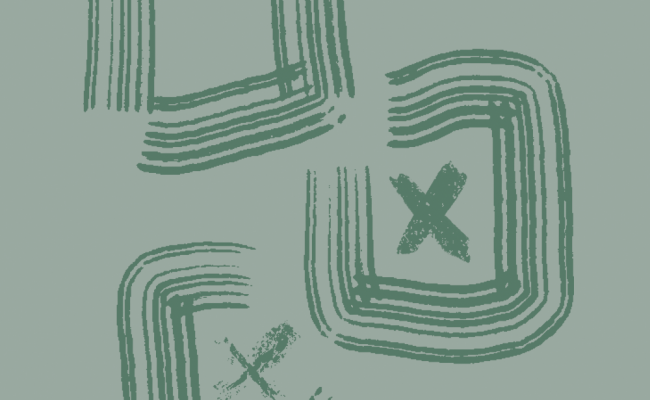The paradigm ‘capital’ (of capitalism) has a revealing etymology. Originating from the Latin ‘capitalis’, meaning, ‘of the head’, in contemporary usage, capital typically refers to that which is of greatest importance (such as the capital city); that which comes first and stands out (such as the capital letter); or that which sits above or on top (as the head literally sits above the shoulders, or as a figurative head sits atop a hierarchical structure, such as the head of a family, state or corporation). Historically speaking, ‘capital punishment’ entailed the severing of the head from the body; and accordingly, a ‘capital crime’ was one for which one could lose one’s head.
The etymological heritage of capital—of or denoting the head—persists in common parlance. Evoking this multifaceted nature of the term ‘capital’, it has been remarked apropos the French Revolution and the execution of King Louis XVI, that ‘the king’s head has been cut off’. In The Royal Remains (2011), Eric Santner characterises the cutting off of the king’s head as an act of double cutting that not only severed the king’s head from his individual body, but from the collective body as well. For Juliet Rogers (2014), this moment of cutting inaugurated a novel relation between Sovereign and subject. As the king’s head was cut from his body, the collective body (the demos) was also cut (that is, birthed) from the void. For Rogers, the demos can therefore be conceptualised as both taking the place of that which was cut (the king’s head/the head of state), and as taking place through the cut (as the inaugural democratic action that founds what comes to be known as contemporary Western democracy).
The ‘fall’ occasioned by this act of double cutting pays homage to the falling flesh of Eden—that of the forbidden fruit—which, when cut, signalled the ‘fall of man’ [sic] and supposedly the simultaneous ‘birthing’ of humanity. Interestingly, this notion of falling as birthing is also echoed in the Western concept of ‘descendants’, implying both those who fell (that is, literally ‘descended’), as well as those from whom we (supposedly) fell.
Where ‘capital’ figures in capitalism involves a murkier etymological story. As capital circulates, as capital must, so too heads circulate in the form of cash and coins, typically stamped with past and present ‘heads’ of state. This etymological origin also remains present in the trading of ‘stocks’. This is perhaps most evident with respect to the trading of livestock, which is often quantified in the currency of heads (in phrases like ‘I have 100 head of cattle’). There are also links to practices of slavery, which are bound inseparably to capitalism. When quantifying slaves, for example, it was once common to ask, ‘how many heads do you have?’, rather than, ‘how many bodies’. Indeed, horrifically, some historical taxation debates revolved around whether slave-owners should be taxed ‘per head’ of slaves, just as farmers were taxed per head of cattle.
As Wendy Brown notes in Undoing the Demos, despite the habit of counting heads numerically, the ‘value’ (work-potential) of the slave has historically been quantified in terms of the body and its capacity for physical labour. How strong and able is the body, and how much work can it do? As Brown elaborates, despite counting ‘heads’, slave-owners sought to nullify that side of the Cartesian coin by reducing the slave to a body—a manoeuvre considered imperative by many slave-owners, not only for their own interests, but supposedly also for those of the slave. In the prevailing logic of the era, it would do a slave no good to receive an education or to learn about the outside world, for if this were to happen, the slave would realise their perilous situation, become dissatisfied with their living conditions, and therefore would become miserable in life (Brown 2015, p.89). More ‘importantly’ for the owner, by edifying the mind of the slave, the work potential of the body would be lost (Brown 2015, p.89). For the slave-owner, inactivity of mind was thought to ensure docile productivity of body, while fecundity threatened a lethargy tantamount to lost productivity.
Within the traditional Cartesian ideologies of capital/ism, the slave-owner and the capitalist (who are often the same figure) are typically depicted as embodying a diametrically opposed position to that of the slave (including the contemporary wage-slave). The capitalist is depicted as a subject with extreme mental liveliness: a mind full of imaginative, entrepreneurial ideas that are capable of (re)shaping the world: a mind full of ‘vision’ and ideas that can supposedly be realised as reality itself. In this dualist ideological formation, ideas remain reliant on the body for actualisation, but only to the extent that the body remains subservient (slave) to the mind as that which is inert and dull even in its activity: a tool put to the work of the mind to realise its vibrant thoughts. Of course, in capitalist ideology, the mind and body in question need not belong to the same subject; indeed, a great number of bodies are often ‘put to work’ in service of one ‘mind’—that of the capitalist, employer, boss or slave-owner. In the literary trope of the harsh ‘foreman’, for example, a factory of bodies is instrumentalised towards the vision of the foreman, whose mind is valourised as prime mover, while the collective and the individual bodies of workers are belittled and devalued.
With the etymology of capital in mind, capitalism, which is sometimes characterised as a structure of institutionalised hedonism (facilitating gross excesses of production and consumption for capitalist/bourgeois classes), might also be accurately referred to as a form of ‘headinism’: as a structure that (re)produces the Cartesian mind/body split, while prioritising the mind over the body in the process. As Elaine Scarry notes, it is perhaps no coincidence that Marx borrowed heavily from the language of biology and anatomy in describing the morphologies of capital(ism), articulating its ‘flows’, ‘production’, ‘consumption’, ‘reproduction’ and ‘circulation’ (1985, p.245). We know that for Marx, capital(ism) not only mystifies the means of production. So too, it mystifies the means of its own production—that is, it masks what really sustains it. I would suggest that one possible key to unlocking or identifying that which capitalism mystifies, is an understanding of its etymology, and the Cartesian origins it obscures.
Endnote
1 http://www.etymonline.com/index.php?term=capital
References
Brown W (2015) Undoing the Demos: Neoliberalism’s Stealth Revolution, MIT Press.
Rogers J (2014) Law’s Cut on the Body of Human Rights: Female Circumcision, Torture and Sacred Flesh, Routledge.
Santner E (2011) The Royal Remains: The People’s Two Bodies and the Endgames of Sovereignty, University of Chicago Press, Chicago & London.
Scarry E (1985) The Body in Pain: The Making and Unmaking of the World, Oxford University Press, New York, Oxford.
Read the rest of Overland 245
If you enjoyed this piece, buy the issue




